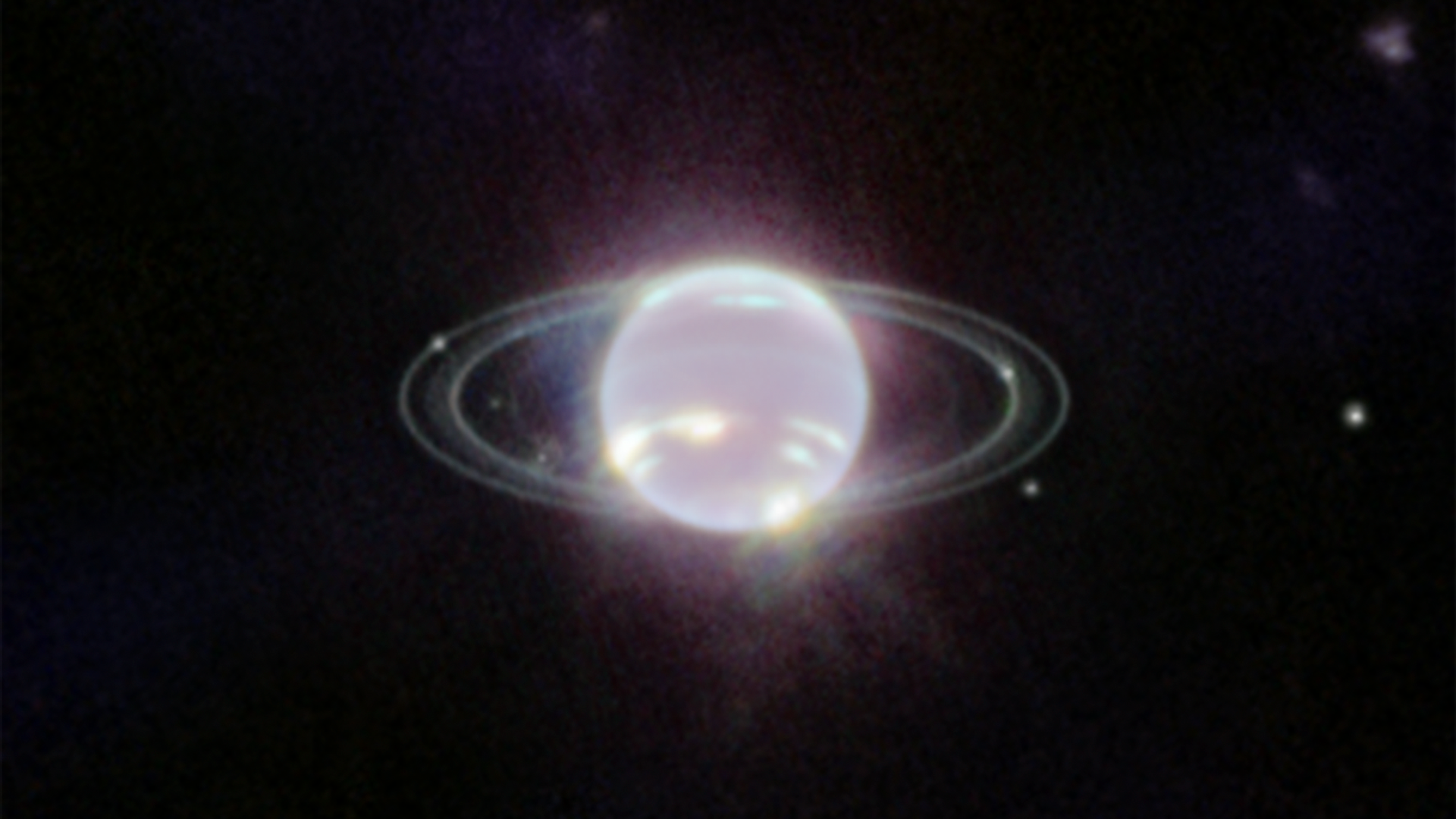https://sputnikglobe.com/20230908/massive-neptune-sized-exoplanet-denser-than-steel-believed-result-of-planetary-collisions-1113216932.html
Massive Neptune-Sized Exoplanet Denser Than Steel Believed Result of Planetary Collisions
Massive Neptune-Sized Exoplanet Denser Than Steel Believed Result of Planetary Collisions
Sputnik International
Astronomers have spotted a new and bizarre exoplanet that they think is the result of a collision between at least two other planets.
2023-09-08T20:22+0000
2023-09-08T20:22+0000
2023-09-08T20:20+0000
beyond politics
neptune
super-earth
astronomy
steel
https://cdn1.img.sputnikglobe.com/img/07e6/09/16/1101066863_0:88:1680:1033_1920x0_80_0_0_cdfdee7a1e8aa753bf0cca22b67a620a.png
The exoplanet designated TOI-1853b is about 542 light-years from Earth and just a little bit smaller than Neptune. However, a team at the University of Bristol in the UK and the University of Rome Tor Vergata in Italy discovered that this seemingly ordinary planet is unusually dense: whereas Neptune is about 17.15 times the mass of the Earth, TOI-1853b has a stunning mass of 73.2 times the mass of the Earth, or four times the mass of Neptune.Rocky planets bigger than Earth are known to science: dubbed “super-Earths,” the largest, Kepler-277c, is estimated to have a mass 64 times that of the Earth and about two-thirds the diameter of Neptune, with a density near that of TOI-1853b.Yet, according to prevailing theories about the formation of planets, rocky worlds of that size shouldn’t exist, and should be mostly gas, like the giant planets of our own solar system. According to the astronomers’ new paper, published last week in Nature, such huge worlds could be agglomerations of other smaller rocky worlds."TOI-1853b is the size of Neptune but has a density higher than steel. Our work shows that this can happen if the planet experienced extremely energetic planet-planet collisions during its formation. These collisions stripped away some of the lighter atmosphere and water leaving a substantially rock-enriched, high-density planet."Phil Carter, a senior research associate at Bristol's School of Physics and co-author of the study, said the team modeled extreme giant impacts capable of removing the lighter atmosphere and water/ice from the planet in order to produce the extreme density seen in TOI-1853b."We had not previously investigated such extreme giant impacts as they are not something we had expected," said University of Bristol physicist Zoë Leinhardt."There is much work to be done to improve the material models that underlie our simulations, and to extend the range of extreme giant impacts modeled."Planetary collisions may not be unknown in our solar system, either: one theory about the formation of Earth’s moon, which is very similar in terms of composition to Earth, holds that the moon formed from material ejected by a collision between Earth and another planet-sized object that was subsequently destroyed during the solar system’s formation.
https://sputnikglobe.com/20230801/hubble-spots-toddler-red-dwarf-star-blasting-away-planets-atmosphere-in-tantrum-1112330414.html
https://sputnikglobe.com/20230824/astronomers-detect-dark-spot-on-neptune-for-first-time-using-earth-based-telescope-1112869224.html
neptune
Sputnik International
feedback@sputniknews.com
+74956456601
MIA „Rossiya Segodnya“
2023
News
en_EN
Sputnik International
feedback@sputniknews.com
+74956456601
MIA „Rossiya Segodnya“
Sputnik International
feedback@sputniknews.com
+74956456601
MIA „Rossiya Segodnya“
exoplanet; astronomy; denser than steel; super-earth
exoplanet; astronomy; denser than steel; super-earth
Massive Neptune-Sized Exoplanet Denser Than Steel Believed Result of Planetary Collisions
Astronomers have spotted a new and bizarre exoplanet that they think is the result of a collision between at least two other planets.
The exoplanet designated TOI-1853b is about 542 light-years from Earth and just a little bit smaller than Neptune. However, a team at the University of Bristol in the UK and the University of Rome Tor Vergata in Italy discovered that this seemingly ordinary planet is unusually dense: whereas Neptune is about 17.15 times the mass of the Earth, TOI-1853b has a stunning mass of 73.2 times the mass of the Earth, or four times the mass of Neptune.
In terms of compactness, that means TOI-1853b has a density of 9.7 grams per cubic centimeter, which is not just denser than Neptune (1.64 grams per cubic centimeter) or Earth (5.15 gram per cubic centimeter), it’s denser than steel, too, which has a density of about 8.05 grams per cubic centimeter.
Rocky planets bigger than Earth are known to science: dubbed “super-Earths,” the largest, Kepler-277c, is estimated to have a mass 64 times that of the Earth and about two-thirds the diameter of Neptune, with a density near that of TOI-1853b.
Yet, according to prevailing theories about the formation of planets, rocky worlds of that size shouldn’t exist, and should be mostly gas, like the giant planets of our own solar system. According to the astronomers’ new paper,
published last week in Nature, such huge worlds could be agglomerations of other smaller rocky worlds.
"This planet is very surprising! Normally we expect planets forming with this much rock to become gas giants like Jupiter which have densities similar to water," physicist Jingyao Dou of the University of Bristol said in a news release.
"TOI-1853b is the size of Neptune but has a density higher than steel. Our work shows that this can happen if the planet experienced extremely energetic planet-planet collisions during its formation. These collisions stripped away some of the lighter atmosphere and water leaving a substantially rock-enriched, high-density planet."
Phil Carter, a senior research associate at Bristol's School of Physics and co-author of the study, said the team modeled extreme giant impacts capable of removing the lighter atmosphere and water/ice from the planet in order to produce the extreme density seen in TOI-1853b.
"We found that the initial planetary body would likely have needed to be water-rich and suffer an extreme giant impact at a speed of greater than 75 km/s in order to produce TOI-1853b as it is observed,” Carter explained.
"We had not previously investigated such extreme giant impacts as they are not something we had expected," said University of Bristol physicist Zoë Leinhardt.

24 August 2023, 21:09 GMT
"There is much work to be done to improve the material models that underlie our simulations, and to extend the range of extreme giant impacts modeled."
Planetary collisions may not be unknown in our solar system, either: one theory about the formation of Earth’s moon, which is very similar in terms of composition to Earth, holds that the moon formed from material ejected by a collision between Earth and another planet-sized object that was subsequently destroyed during the solar system’s formation.




